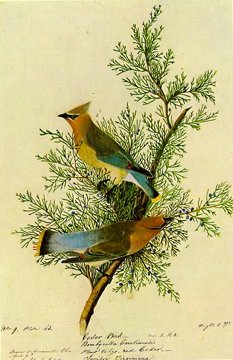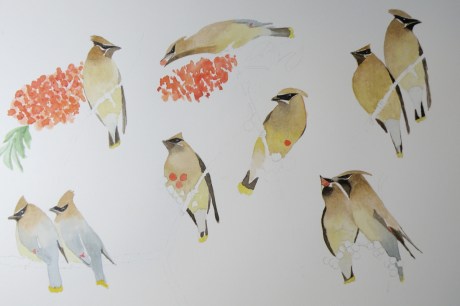“. . . A couple of years ago I made the wonderful discovery that the common ornamental tree I know as Mountain Ash is the fabled rowan tree, revered in the mythology of northern lands for its protective and divinatory properties. I was told about it by the mother of a friend who also informed me that rowan jelly is the traditional accompaniment to twelfth-cake in the Christmas season.
I have since looked at many different recipes for rowan berry jelly, and note that most of them advise one not to make jelly until the berries have been frozen (either on the tree or in the freezer), since this makes them sweeter. Apparently raw mountain ash berries can be toxic (I remember my father complaining that they were so acidic that they could eat holes in cars), but heat and freezing both change the chemical structure of the acids they contain.
Here’s a recipe that I’ve used. It came to a lovely set and a great colour, like rosé wine. The taste is something like a cross between grapefruit peels and cranberries: bitter, but tasty.”
Rowan Berry Jelly Recipe
Makes about 3 cups
- About 4 cups of berries which have been frozen (unfrozen berries are very bitter)
- About 1 cup of water
- ¼ cup of lemon juice
- About 1½ cups of natural pectin from apples (You can substitute commercial pectin, but you’ll have to change the quantity of sugar according to their instruction for a similar recipe such as grape jelly.)
- About 3 cups of sugar
- Rinse berries and remove stray leaves, stems and shriveled berries
- Barely cover them with water and heat them to the boiling point, then cover and simmer until they have completely dissolved. You can use a potato masher to reduce them to a pea soup-like mush, as pictured below.
- Strain through a jelly bag. Hang the bag overnight to catch all the liquid, but do not squeeze the bag.






